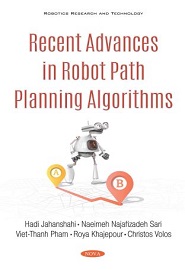
English | 2020 | ISBN: 978-1536167955 | 224 Pages | PDF | 10 MB
The dominant theme of this book is to introduce the different path planning methods and present some of the most appropriate ones for robotic routing; methods that are capable of running on a variety of robots and are resistant to disturbances; being real-time, being autonomous, and the ability to identify high-risk areas and risk management are the other features that will be mentioned in the introduction of the methods. The introduction of the profound significance of the robots and delineation of the navigation and routing theme is provided in the first chapter of the book. The second chapter is concerned with the subject of routing in unknown environments. In the first part of this chapter, the family of bug algorithms including are described. In the following, several conventional methods are submitted. The last part of this chapter is dedicated to the introduction of two recently developed routing methods. The robot path planning relying on the robot vision sensors and applicable computing hardware are concentrated in the fourth chapter. The first part of this chapter deals with routing methods supported mapping capabilities. The second part manages the routing dependent on the vision sensor, typically known as the best sensor, within the routing subject. The movement of two-dimensional robots with two or three degrees of freedom is analyzed within the third part of this chapter. Accordingly, four approaches, named artificial fuzzy potential field, linguistic technique, Markov decision making processes, and fuzzy Markov decision making have been proposed in two following parts and enforced on the Nao humanoid robot.
HomepageResolve the captcha to access the links!